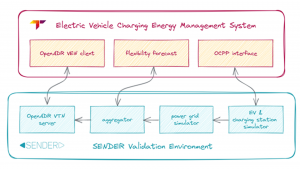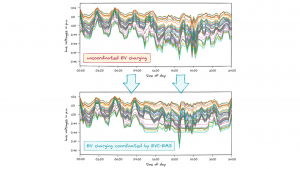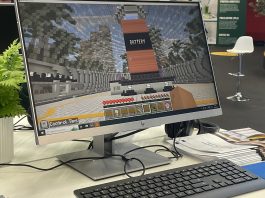The SENDER Project aims to upgrade home automation and energy service, and shows how functional testing remains a vital aspect of these developments.
SENDER is a project funded by the European Commission’s Horizon 2020 programme that aims to develop the next generation of energy service applications for demand response (DR) and home automation. It is a collaborative project gathering several organisations including companies, co-operative, associations and universities, and Smart Innovation Norway is the project co-ordinator. An essential aspect of SENDER is the functional testing of the developed solutions to ensure that they meet their objectives and provide a high-quality user experience.
SENDER validation framework
Functional testing ensures that applications function as intended. It ensures that the generated software fits the requirements and performs properly under a variety of scenarios. This is vital to ensure that the energy service applications provide the expected services and benefits to users.
Functional testing ensures that the developed services can handle a variety of scenarios and will continue to work reliably over time. Functional testing also contributes to the delivery of a dependable and user-friendly product. Users are more likely to have a pleasant experience when applications perform as intended, which is especially crucial in consumer-oriented projects like SENDER that target home automation and DR.
For the functional testing in SENDER, a dedicated validation environment has been developed. This has enabled the deployment of various scenarios for testing the system’s response to different orders of DR. It integrates all the required components based on the selected test cases, tying together the SENDER solution with hardware prototypes and simulation tools for emulating the external environment.
The global solution’s layer of decision-making when a DR order from a utility is received and directed towards the SENDER solution was created in partnership with the SENDER technology vendors. This has allowed for laboratory-scale testing and validation of the SENDER solution and associated components using a controller hardware-in-the-loop approach with simulated demand repose signals generated by the validation environment.
The tests were designed and carried out in such a way that they provide comprehensive coverage of the functions and an analysis of the dependencies of the developed solution.
The validation environment has been deployed with the help of a dedicated shared working environment for system integration and testing called VLab Central, which is developed, hosted, and maintained by the AIT Austrian Institute of Technology.
VLab Central provides virtualised working environments and allows the deployment of containerised services that can be accessed either via a local network (LAN) or remotely via a virtual private network (VPN).
The OpenADR specification
During the design of the SENDER system, the importance of providing an external interface to aggregators was recognised. As aggregators are the main market actors for the SENDER solution, this interface must rely on well-established and commonly accepted standards and protocols for DR schemes.
For the purpose of the SENDER solution, the OpenADR 2.0b specification has been identified as an open communication standard used in the energy industry to facilitate the exchange of information and signals between utilities and end-users for DR purposes.
In the OpenADR framework, there are two key components that work together to enable effective DR programmes:
- The Virtual Top Node (VTN) acts as the central management system within the OpenADR architecture. It serves as the interface between a utility or aggregator and the participating customers. The VTN is responsible for sending signals to assets and receiving information back from them. It communicates information such as price signals, grid conditions, and DR event notifications.
- The Virtual End Node (VEN) represents the individual assets that can respond to DR signals within a customer’s premises. These can include smart thermostats, energy management systems, building automation systems, or even individual appliances. The VEN receives signals from the VTN, interprets them, and takes appropriate actions to adjust energy consumption based on the predefined response strategies set by the customer or device owner. In short, the VTN acts as the central command centre, sending signals and co-ordinating the response, while the VENs receive these signals and implement the necessary actions to optimise energy usage and participate in DR programmes.

Functional testing requires a validation environment that simulates the external systems or components with which the test system needs to interact. In the specific case of SENDER, it involves testing the OpenADR-based communication and data flow of the SENDER solution with different external setups.
Functional testing in SENDER also had to cover different operation modes of OpenADR for exchanging data between VTN and VEN, covering a wide range of deployment options.
With the VLab Central at its core, the SENDER validation framework allows the integration of all the required components according to both the OpenADR specification and the architecture of the SENDER solution.
Example application: Electric Vehicle Charging Energy Management System (EVC-EMS)
Electric vehicles (EVs) are a valuable flexible load for DR programmes since their effective charging time is usually less than their plugged time.
Ancillary system services, for example, can employ EVs to assist in grid operation by modifying charging profiles, e.g., by synchronising EV charging to periods of renewable electricity output. Also, EV owners with a dynamic tariff contract might choose to reduce their electricity price by co-ordinating vehicle charging with periods of low electricity.
Therefore, an important component of the SENDER solution is the Electric Vehicle Charging Energy Management System (EVC-EMS) developed by Trialog SAS.
The EVC-EMS is a system for extracting EV-based flexibility from local charging stations, regulating EV charging rates to compute and inform the external aggregator about the available demand flexibility, and proceeding, upon request, to flexibility dispatching.
The EVC-EMS is designed for “Fast DR” scenarios, i.e., for DR use cases where the expected application of DR signals is immediate or nearly instant.
While standard peak-shaving DR systems need hours or days of lead time, this setup is designed for load balancing and frequency stabilisation (e.g., ancillary services and regulation services) in seconds or minutes.
For the functional testing of the EVC-EMS, a test scenario focusing on exploiting EV charging station flexibility to manage voltage in a low-voltage (LV) distribution network has been developed.
In this scenario, an external aggregator monitors the electrical grid in order to keep voltage levels within certain limits. To produce DR events, the aggregator can match network status information with flexibility forecasts obtained from the EVC-EMS. Every 15 minutes, a new setpoint for the total power consumption of all charging stations is calculated and delivered to the EVC-EMS. The latter, in turn, acts upon these events and controls the charging stations accordingly.
Like in the case of a real-world setup, the EVC-EMS is deployed using Trialog’s IT/OT infrastructure. The interface to the external aggregator is a dedicated VEN client, which can receive DR signals and send reports to the aggregator’s VTN. A REST API provides flexibility forecasts for the aggregator.
The SENDER validation environment is used to emulate and connect to all required components of the external system in real time. A suite of simulators for EVs and EV supply equipment emulates EV charging at local charging stations. Like charging stations in real-world setups, these simulators communicate with the EVC-EMS via the Open Charge Point Protocol (OCPP).

The operational state of the electrical LV distribution grid is computed on-demand with the help of the power system simulator. An emulated aggregator performs the computation of the total power consumption setpoints for the charging stations based on the flexibility forecast and the simulated network state. The corresponding DR signals are sent every 15 minutes to the EVC-EMS via the VTN server.
The results show that the co-ordination of the EV charging with the help of the EVC-EMS can be successfully utilised for a Fast DR programme for voltage control in LV distribution networks. The tested DR scheme was able to considerably reduce overvoltage, as shown by a comparison of the voltage profiles for unco-ordinated EV charging versus EV charging co-ordinated by the EVC-EMS.
The SENDER project relies on a dedicated validation environment for functional testing
Despite the fact that functional testing is by no means a novel idea, its importance in product lifecycles is frequently overlooked. In the energy domain, this appears to be particularly true for home automation and related flexibility services, which take place “behind the meter” and outside of the regulated grid.
However, potential issues that are not resolved during testing could result in disruptions or failures in the live production environment, causing inconvenience and potential financial losses for users.
The SENDER project relies on a dedicated validation environment for functional testing. This validation environment is equipped with the necessary tools and resources to emulate real-world scenarios and thoroughly test the functionality of the SENDER solution. It has allowed the project team to identify and address any potential issues before deploying the solutions in a live production environment, ensuring a smooth and seamless experience for end-users.
The coming year will see the roll-out of the SENDER solution at three pilot sites in Austria, Finland, and Spain. Given the experience gained from the functional testing phase, the project team is confident that the SENDER solution will be successfully integrated and will demonstrate its applicability for the next generation of DR schemes.
 The SENDER project has received funding from the European Union’s Horizon 2020 Research and Innovation programme under Grant Agreement
The SENDER project has received funding from the European Union’s Horizon 2020 Research and Innovation programme under Grant Agreement
No. 957755.
Please note, this article will also appear in the sixteenth edition of our quarterly publication.









